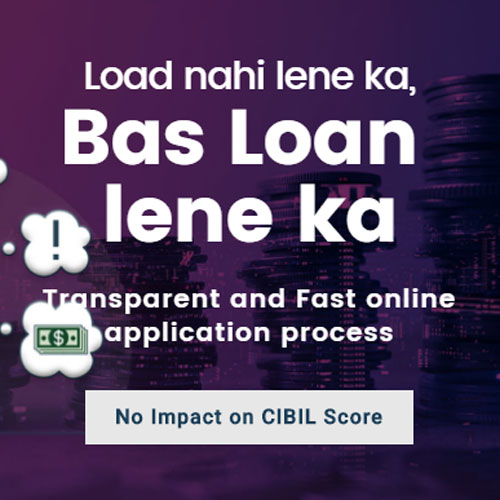Home Loan Guide for First Time Home Buyers
If you’re one of the millennials, you’d know that owning a home has long since been the quintessential Indian dream. But in the 21st century, where an entire world’s economy hinges on a volatile stock market, buying one doesn’t come easy. If you are a first-time home buyer in particular, you need to be equipped with the know-how of how a home loan works in the current scenario.
Home Loan: What is it?
A Home Loan is basically a form of financial reinforcement availed of to fund the purchase or construction of a house. In the present times, a home loan can also be used to refinance an already existing home loan or simply reimburse the cost of buying a second-hand property.
Home Loan and Its Basic Types:
There are several different types of home loans, depending on the purpose they are used for. Some of the most commonly seen ones are:
- Home Purchase Loans Home purchase loans are, by far, the most popular types of home loans in India. This is where an individual uses the disbursed loan amount to purchase a newly built apartment or an already constructed property. Nearly every bank and financial institution in India offers this type of loan. Each of the banks, however, follow their own interest rate policy and loan terms.
- Land Purchase Loans Land purchase loans, as the name suggests, are used to fund the purchase of a land where an individual is planning to construct their home. Lenders usually provide a maximum of 85%-90% of its cost, while the other 15% should be put together by the applicant.All the major banks and NBFCs like HDFC Bank, Axis Bank, Punjab National Bank, and DHFL among many other offer land purchase loans, albeit under a different names.
- Home Construction Loans These type of loan is available for individuals who are planning to build a house of their own land. The application and approval process to avail this loan though is a little tricky. Take for example, if the individual wants the cost of land to be included as a component for the total price of the house, they must have bought the property within the previous year. Again, every major bank in India like HDFC, Axis, State Bank of India, Canara Bank, UCO Bank et al offer this type of loan.
- Home Improvement Loans Home improvement loans are taken by individuals who are unable to mobilise enough funds to renovate the house they are living in. The maximum home improvement loan an individual is eligible for depends entirely on their debt-to-income ratio and their financial standing.
What Is The Eligibility Criteria for a Home Loan?
All banks and NBFCs in India have their own eligibility criteria a prospective home loan buyer has to meet. Here’s a list of the primary requirements.
- You need to be aged between 18 and 60 years.
- You need to be a salaried or a self-employed individual with a steady income.
- You need to earn more than the minimum income quoted by the banks.
These three aspects qualify you for a loan. However, there are a few other factors on which your application hinges. They are:
- Your monthly income: When you apply for a home loan with any lender, you need to prove to them that you have at least 50% of your income ready to serve the EMIs.
- Other loan commitments: Having a high monthly income doesn’t necessarily guarantee you a home loan. Also, if you are in the pursuit of repaying any other loans, the total loan amount you’ll be eligible for will significantly decrease. This is why you need to make sure to clear every other loan commitment before applying for a home loan.
- Your down payment capability: A lender never gives out the entire loan amount you’ve applied for. In fact, the most they will give you is 80% of the value of the property. The other 20% funds should be mobilised by you. If you are applying for a new home loan, you should make sure to have the down payment fund ready so that your application doesn’t get rejected.
What are The Documents Required to Apply for a Home Loan?
Every home loan provider more or less follow the same documentation process before signing off on the loan application. Here are a list of documents you need to keep ready when you decide to take a home loan.
- Fully filled and signed application form along with a photograph.
- Identification proof and residence proof: For ID proof you can provide anything like your PAN Card and for residence proof, you need to provide a copy of your passport/driving license or any of the latest utility bill.
- Cheque for the processing fee.
- Bank statements of the previous 6 months.
Besides these, there are also a few other documents you need to provide depending on whether you are a salaried or a self-employed professional.
Salaried professionals need to provide their pay-slips for the last three months along with their Form 16 or Income Tax Returns (ITR) filing.
Self-employed professionals, on the other hand, need to provide proof of education qualification certificate and proof of their business’ existence. Apart from this they need to provide proof of ITR for the previous three years which should also include the computation of income. Lastly, they need to provide a CA audited/certified balance sheet and profit-loss account for the previous three years.
What are The Different Types of Home Loan Interest Rates in India?
Before we head into home loan interest rates in India, let’s first ascertain how a rate is fixed. An interest rate on a home loan is dependent on two policies: Marginal Cost of Lending Rates (MCLR).
MCLR policy is a policy brought into effect by the Reserve Bank of India (RBI) from April 2016 in place of Repo Rate policy. It plays a featuring role in determining the home loan lending rates set by financial institutions. Under this policy, banks need to fix a base rate based on their cost of running business based on which which they can quote an interest rate as per the borrower’s risk factor.
If RBI increases or decreases the repo rate significantly, banks and financial institutions need to follow suit to correct the base rate as per guidelines.
Now, that the basics of how an interest rate is set is ascertained. Let’s talk about the different types of interest rates available in India, of which they are two.
- Fixed Interest Rate Home Loan: A fixed interest rate home loan is a type of home loan rate, wherein the interest rate is fixed for the entire tenure of the loan. This means that the interest rates aren’t likely to change even if there are significant changes in the economic market. Under this type of loan, a major component of EMIs in the beginning go into servicing the interest while the principal repayment only comes in the latter half. Some of the advantages and disadvantages of Fixed Interest Rate Home Loan include:
Advantages Disadvantages Interest rate stays the same through the tenure, which brings a level of certainty for the borrower. These loans usually workout a good 1%-2.5% more than floating rate loans. Helpful for good budgeters as it comes with a fixed monthly repayment schedule. Borrowers cannot take the advantage of an interest rate cuts during their loan tenure. - Floating Interest Rate Home Loan: A floating interest rate home loan is a home loan where in the rate of interest varies according to the market conditions. This means that interest can either go up or down depending on how the market is performing. Some of the advantages of floating interest rate home loan include:
Advantages Disadvantages Comparatively cheaper than fixed interest rate home loans, as long as the market remains stable. Market is volatile and any unexpected downturn can increase the interest rates and in turn EMIs significantly. This type of loan is cyclical as interest go up and come down often. This helps a borrower save a considerable sum on interest paid. If the rate goes beyond 11.5% or so, this type of loan can become an expensive burden for the borrower.
Things That Affect Your Home Loan Application and Approval Process
There are plenty of factors that will have a bearing on how your loan application fares with a a lender you have chosen to apply with. They are:
- Age
- Income bracket
- Property type and its location
- Market value of the property
After you submit the required documentation to the lender, they will thoroughly vet the details you’ve provided to ensure that they check out. Depending on their findings, you will be offered a loan deal. One important thing you should understand here is that their findings will be directly proportional to the term and conditions you get.
What Are The Home Loan Deals Offered By Some of The Leading Banks?
Here are some of the best home loan deals offered by some of the leading banks in the country.
- State Bank of India: SBI, one of the largest banks in the world, currently offers a floating rate home loan deal with a base rate of 9.75% per annum. The lending rates, however, are slightly higher. For a loan of up to Rs. 30 lakhs, the interest rate stands at 0.25% above the base rate, effective bringing the overall interest to 10%. For loans above Rs. 30 lakhs, the rate stands at 0.40% above the base rate, which brings the rate to 10.15%. The maximum tenure SBI offers goes up to 30 years.
- HDFC Bank HDFC Bank, one of the largest financial institutions in India with regards to market capital to market capitalization also has an extensive home loan offering. The bank uses the Retail Prime Lending Rate (RPLR) – Spread formula to determine the interest rate, where in RPLR is the minimum rate at which the it lends and spread is discount or markup offered on the loan .It basically offers 3 different variants of home loans. They are:
- Called the Adjustable Rate Loan, this loan offers any amount at a rate that goes between 9.45%-9.95%. Here’s a table that lists the rates.
Loan Amount Interest Rate (p.a.) RPLR – Spread For Women* (Any Loan Amount) 9.40 to 9.90 RPLR – (6.90 to 6.40) Any Loan Amount 9.45 to 9.95 RPLR – (6.95- 6.45 - Known as the TruFixed Loan, this loan comes with 2 and 3 year fixed rate variant. In this case too, the bank is ready to offer any loan amount.
Loan Amount Interest Rate during 2nd and 3rd year of fixed rate term (p.a.) Interest rate after the end of fixed rate term For Women* (Any Loan Amount) 9.50 to 10.00 RPLR – (6.80 to 6.30) Any Loan Amount 9.55 to 10.05 RPLR – (6.75- 6.25) - This is yet another offering, known again as TruFixed Loan, is available for 10 year fixed variants.
Loan Amount Interest Rate after the 10 year fixed rate term (p.a.) Interest rate after the end of fixed rate term For Women* (Any Loan Amount) 9.70 to 10.20 RPLR – (6.60 to 6.10) Any Loan Amount 9.75 to 10.25 RPLR – (6.55- 6.05)
- Called the Adjustable Rate Loan, this loan offers any amount at a rate that goes between 9.45%-9.95%. Here’s a table that lists the rates.
- ICICI Bank:ICICI Bank, also among the leading banks in the country is offering a good home loan deal too. Here’s are a few tables that list out ICICI bank’s offering for salaried and self-employed individuals. For all intents and purposes I-MCLR- 1Y is the home loan benchmark set by the bank.
- Fixed Interest Rate for full tenure:
Loan Amount Effective Rate of Interest (p.a.) Upto Rs. 30 lakh 9.75% Above Rs. 30 lakh 9.85%-10.10% - Floating Interest Rate Loan:
Loan Amount Effective Rate of Interest (p.a.) Rate Upto Rs. 5 crores 9.45% I-MCLR-0.30% Above Rs. 5 crores 9.75% I-MCLR-0.55% - Fixed Interest Rate for 2,3 years:
Loan Amount Fixed rate for 24/36 months Floating rate from 25th/37th month Upto Rs. 5 crores 9.35% I-MCLR-1Y +0.35% Above Rs. 5 crores 9.70% I-MCLR-1Y + 0.60% - Fixed Interest Rate for 5,10 years:
Loan Amount Fixed rate for 60/120 months Floating rate from 61st/120th month Upto Rs. 30 lakhs 9.45% I-MCLR-1Y +0.35% Above Rs. 30 lakhs 9.55%- 9.80% I-MCLR-1Y + (0.45% to 0.70%)
- Fixed Interest Rate for full tenure:
What Are The Things You Should Keep in Mind Before Applying For a Home Loan?
A home loan can be a massive burden if you don’t consider all the details that go into it. Here are a few things you should keep in mind before applying for one.
- Your Borrowing Capacity: You shouldn’t opt for a higher loan amount just because you draw a bigger paycheck. Before applying for a home loan, you should carefully understand your borrowing capability. But, how can one exactly find out the loan amount they are eligible for? It’s fairly simple. First things first, you need to keep in mind all the expenses you incur in a month. These may include your regular household expenses, travel, kids’ fees, utility bills, pending loan payments, and miscellaneous expenses. Once you’ve listed down all these expenses, the amount you are left with is what you can use to make the EMI payments on the home loan.
- Credit Score:You may not feel the importance of credit scores all that much, but it is the most crucial determinant of the interest rate you are likely to get. For a good home loan rate, you will need to maintain a credit score of 750 or above. Having a score such as this would endear a lender to you as they are less likely to be a liability for them. This will also help you get an interest rate which is a which basis points lower that what they officially claim.
- Loan Tenure:Home loans can often go on for over 20 years, and up to 30 years, in the case of SBI. Analyse the loan tenure you’ve been offered and see if the tenure works out for you. If you think you need more room, negotiate a better term with the bank or reduce the total loan amount you have applied for instead.
- The Terms and Conditions of The Loan:The terms and conditions you sign when borrowing a home loan is legally binding, which suggest that you have read all the terms and conditions laid out by the bank and comply with the offer. What you may not know, however, is that this is also one of the places where lenders tend to add draconian clauses and enforce them. So, avoid falling into such rabbit holes and make sure to go through all the clauses and sub clauses mentioned in the loan agreement before signing on the dotted lines.





